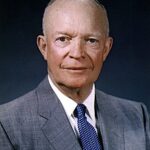The Strategic Decision Behind NASA’s Creation
President Dwight D. Eisenhower made one of America’s most transformative decisions on July 29, 1958. The creation of NASA emerged from the urgent need to respond to Soviet space achievements. The Sputnik launch on October 4, 1957, shocked Americans and demonstrated Soviet technological superiority.
From Crisis to Innovation
Eisenhower recognized that scattered American space efforts needed coordination. Multiple agencies competed for resources without clear leadership. The National Aeronautics and Space Act consolidated these fragmented programs under one civilian agency. 📊 This strategic reorganization transformed 8,000 employees from the National Advisory Committee for Aeronautics into NASA’s foundation.
Building America’s Space Legacy
The president chose civilian control over military dominance for space exploration. This decision positioned America as a peaceful pioneer rather than an aggressor. 🌍 NASA received $100 million in initial funding and a clear mandate. The agency would pursue both scientific research and national prestige through space achievements.
Impact:
Immediate Transformation of American Science
The creation of NASA revolutionized American scientific capabilities within months of its establishment. The agency unified previously scattered research efforts across multiple government departments. 🚀 NASA’s first major success came with Explorer 1 in January 1958, discovering the Van Allen radiation belts. This achievement restored American confidence and demonstrated the wisdom of Eisenhower’s organizational strategy.
Long-term Economic and Technological Benefits
NASA’s establishment created countless technological innovations that transformed civilian life. Satellite communications, computer miniaturization, and materials science advanced rapidly under NASA’s research programs. 💰 The space program generated over $7 for every dollar invested through technological spillovers. These innovations strengthened American industrial competitiveness for decades.
Global Leadership and Scientific Prestige
Eisenhower’s decision positioned America as the world’s leading space-faring nation. The creation of NASA enabled the Apollo program that landed Americans on the moon. 🌍 This achievement demonstrated American technological superiority and fulfilled Kennedy’s bold lunar challenge. NASA continues to lead international space cooperation and scientific discovery today.
